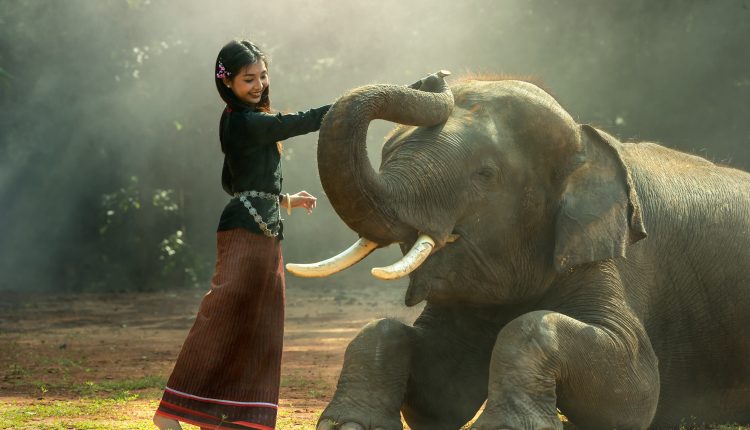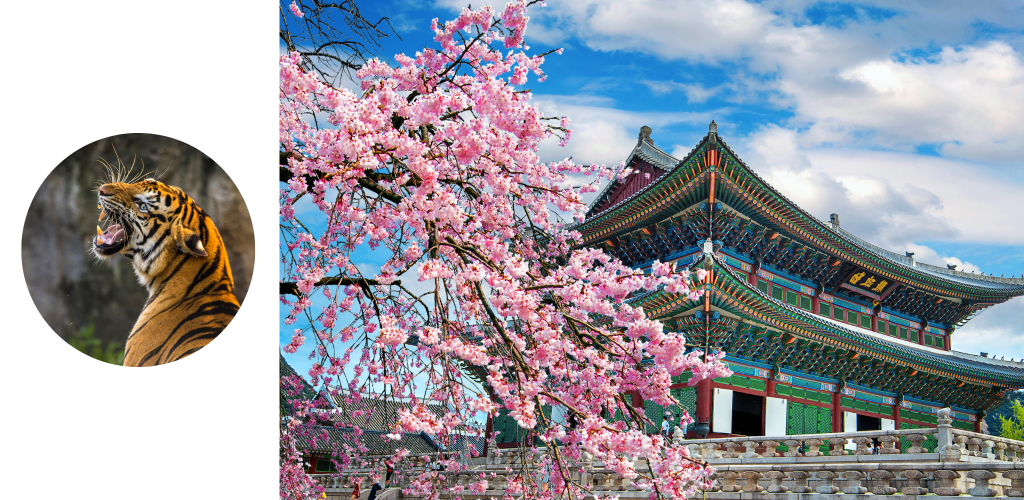Guardians of Tradition: Symbols of Culture and Spirituality
Asia, the largest and most diverse continent on Earth, is home to a plethora of fascinating cultures and belief systems. One intriguing and common aspect of many Asian cultures is the reverence for sacred animals, creatures that hold significant spiritual and cultural importance. But within the symbology, these animals embody the essence of the countries they represent. In this edition of Secret’s Out, we’ll embark on a journey across Asia to explore some of the sacred animals and the profound significance they hold in their respective countries.
India – The Venerated Cow:
The sacred cow holds a deeply revered and symbolic status in India. Rooted in the country’s predominant religion, Hinduism, cows are considered divine and motherly figures. They embody qualities of gentleness, nurturing, and selfless giving, making them a symbol of motherhood and fertility. Cows are believed to be an incarnation of the goddess Kamadhenu, the divine cow that fulfills wishes and grants prosperity. Their association with various Hindu deities, such as Lord Krishna and the Goddess Lakshmi, further enhances their sacred significance. As a result, cows are treated with utmost respect and protection, and harming a cow is considered a sacrilege in Hindu culture. The cow’s importance extends beyond religious beliefs, it plays a vital role in the socio-economic fabric of Indian society, providing milk and other resources that sustain and nourish the lives of millions across the country.
China – The Majestic Dragon:
In the mystical realm of Chinese culture, the sacred dragon reigns as a legendary and awe-inspiring creature, deeply imbued with profound symbolism. The dragon symbolizes imperial power, representing the emperor himself, and has long been associated with strength, prosperity, and good fortune. Unlike the fiery and malevolent dragons of Western mythology, the Chinese dragon is a benevolent and majestic creature, revered as a divine force that brings blessings of rain and water for agricultural prosperity. Its serpentine form and mythical prowess make it a potent emblem of wisdom, harmony, and transformation. The dragon’s omnipresence in Chinese art, architecture, and festivals reflects its essential role in shaping the cultural identity and spiritual beliefs of the nation. As the guardian of cosmic balance and celestial order, the sacred dragon embodies the very essence of Chinese civilization, captivating hearts and minds with its mystical allure for countless generations.
Japan – The Elegant Koi:
The Koi fish, a native freshwater species of Japan, comes in various sizes and colors, making it a popular choice as an ornamental fish for Japanese homes and traditional gardens. During visits to Japanese gardens, one can often witness the elegant Koi fish gracefully gliding through the ponds.
Throughout Japan’s history, Koi have held profound symbolism, representing longevity and good fortune. This association stems from their connection to Chinese dragons, renowned for their association with power, success, and prosperity. As a result, Koi fish frequently appear in the designs of traditional Japanese garments, paintings, and gift wrappings, especially on special occasions like weddings and other auspicious celebrations. A charming cultural tradition in Japan is the Koinobori display, featuring vibrant carp streamers adorning the exteriors of houses during early May. This colorful spectacle is part of the traditional celebrations of Children’s Day, which is observed on May the 5th in Japan, adding to the festive spirit and joyful atmosphere of the occasion.
Thailand – The Respected Elephant:
In the vibrant tapestry of Thai culture, the sacred elephant stands tall as an enduring symbol of reverence, grace, and majesty. Celebrated for its immense strength and intelligence, the elephant embodies qualities that evoke admiration and awe. In Thailand, the elephant is not merely an animal but a revered being, often considered a symbol of royalty and divine protection. As a majestic creature, the elephant is intricately woven into the fabric of Thai folklore and religious beliefs, believed to bring good fortune and prosperity. In ancient times, elephants played pivotal roles in battles and ceremonies, endowing them with a legacy of bravery and loyalty. The white elephant is considered particularly sacred and symbolizes purity and good luck. Today, they continue to hold a special place in the hearts of the Thai people, serving as an emblem of national pride and an enduring testament to the harmonious coexistence between humans and nature. The sight of a regal elephant, adorned with colorful garments, ambling gracefully through Thailand’s vibrant landscapes, is a mesmerizing sight, and one that embodies the nation’s rich cultural heritage and spiritual depth.
Indonesia – The Mighty Garuda:
In the enchanting culture of Indonesian mythology, the Garuda soars with an ethereal grace, bearing a symbolism that weaves together the nation’s ancient beliefs and enduring spirit. As the revered national emblem, the Garuda embodies the essence of Indonesia’s identity and aspirations. With wings outstretched in majestic splendor, it epitomizes the quest for freedom, transcending the confines of earthly limitations. Rooted in Hindu and Buddhist traditions, the Garuda’s presence symbolizes protection, strength, and divine blessings, offering solace to those in need. As a mythical creature, the Garuda is a celestial messenger, bridging the gap between the earthly and the divine realms. It is the embodiment of courage, empowering Indonesians to overcome challenges and strive towards a brighter future. This one-of-a-kind avian deity soars high above the islands of Indonesia, uniting the diverse culture and people, and serving as a timeless beacon of hope, unity, and resilience for the nation.
South Korea – The Courageous Korean Tiger:
In South Korean folklore, the tiger emerges as a captivating and enigmatic creature, steeped in symbolic and cultural significance. Revered for its untamed courage and indomitable spirit, the tiger stands as a symbol of power and protection. In the hearts of the Korean people, the tiger embodies the essence of their national identity, representing the unwavering resilience and strength of the Korean spirit. From ancient legends to traditional art, the tiger’s presence resonates with tales of valor and mythical prowess, serving as a guardian against malevolent forces. This majestic creature, often depicted in vibrant hues and captivating forms, symbolizes the unyielding determination of the Korean people to preserve their heritage and surmount any adversity. As a one-of-a-kind symbol that transcends time, the sacred tiger remains an eternal testament to South Korea’s rich cultural heritage and the enduring legacy of its people.
The sacred animals of Asia provide a fascinating insight into the diverse cultural heritage and spiritual beliefs of the continent. These creatures transcend their roles as mere symbols and become embodiments of the values and essence of the countries they represent. Delve deeper into the captivating mosaic of Asian cultures and legends and embark on your own extraordinary Asia journeys with Secret Retreats. We specialize in crafting tailor-made experiences that will unveil the magic and wonder of this diverse continent just for you. Contact the Secret Retreats concierge team today and start planning your next holiday in Asia!







